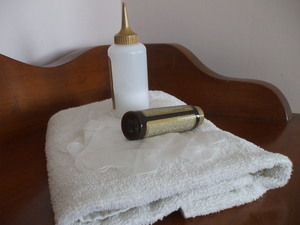A great many women and men use hair color to cover gray hair or to spice up their life by switching to a different hair color. We’re all aware of the risks of using harmful chemicals to dye our hair, such as skin irritation, allergies and hair breakage, but could coloring your hair actually cause cancer?
There are three main types of hair dyes, temporary, semi-permanent and permanent. Temporary hair dyes do not penetrate the hair shaft and usually shampoo out after one or two washings. Semi-permanent hair dyes also avoid penetrating the hair shaft and usually only last five to ten washings. Permanent hair dye will cause permanent chemical changes in the hair shaft and will not change color until new hair growth is present. So, are you at risk for cancer if you color your hair with any of these methods? That depends on which study you take into consideration. Since hair dyes are applied directly to the scalp, if hair dye does cause cancer this would be a great delivery system. The scalp may carry carcinogenics found in hair color directly into the bloodstream and become concentrated in the bladder.
New research has shown that long-term use of permanent dark hair dye may double a person’s risk of certain blood cancers. Dark hair dyes contain a much higher concentration of chemicals than the lighter hair dyes. The good news is that bleaching agents have not been proven to be carcinogenic. Studies show that women who used dark permanent hair color for more than 25 years have an increased chance of non-Hodgkin’s lymphoma or bladder cancer. However, women who used semi-permanent hair dyes or temporary rinses showed no increased risk of cancer.
The Food and Drug Administration’s National Center for Toxicological Research conducted a study in which they looked for a carcinogen called 4-ABP in hair color products purchased from U. S. supermarkets and hair salons. The researchers reported that eight of the 11 hair dyes collected contained 4-ABP. Black, red and blonde hair dyes contained the carcinogen, but it was not found in brown hair dyes. Researchers felt that although the contents of hair dye products may not contain cancer causing ingredients, the oxidization process that the compounds create may cause cancer. A class of chemicals known as aromatic amines are linked to hair dye and may cause cancer. Most people are able to detoxify these compounds; however, due to genetic makeup, some people aren’t able to do so. These are the people who are more at risk of developing cancer from hair dyes.
Are professional hair stylists more at risk for cancer?
In 1991, a study found that hairstylists who handled hair dye for more than five years had tripled the risk of developing breast cancer. Hair dressers mix the chemicals for hair color that create fumes and repeatedly work with these chemicals more often than most consumers. According to the WHO (World Health Organization), there is evidence to suggest that hair dyes can increase the risk of bladder cancer for hairdressers and barbers. Other studies show that the development of some forms of leukemia, blood cancer, and multiple myeloma can increase with use of hair color.
So what safety measures can you take?
If you choose to color your hair, find a hair dye that is chemical-free, odor-free, herbal or is appropriate for people with sensitivities and allergies. Check to see that the amount of ammonia and PPD content in the dye does not exceed 4%. It may be difficult to find out if the product you have purchased contains harmful chemicals because they may be listed as code numbers or other names. Your best bet is to contact the manufacturer to see exactly what your hair color may contain.






